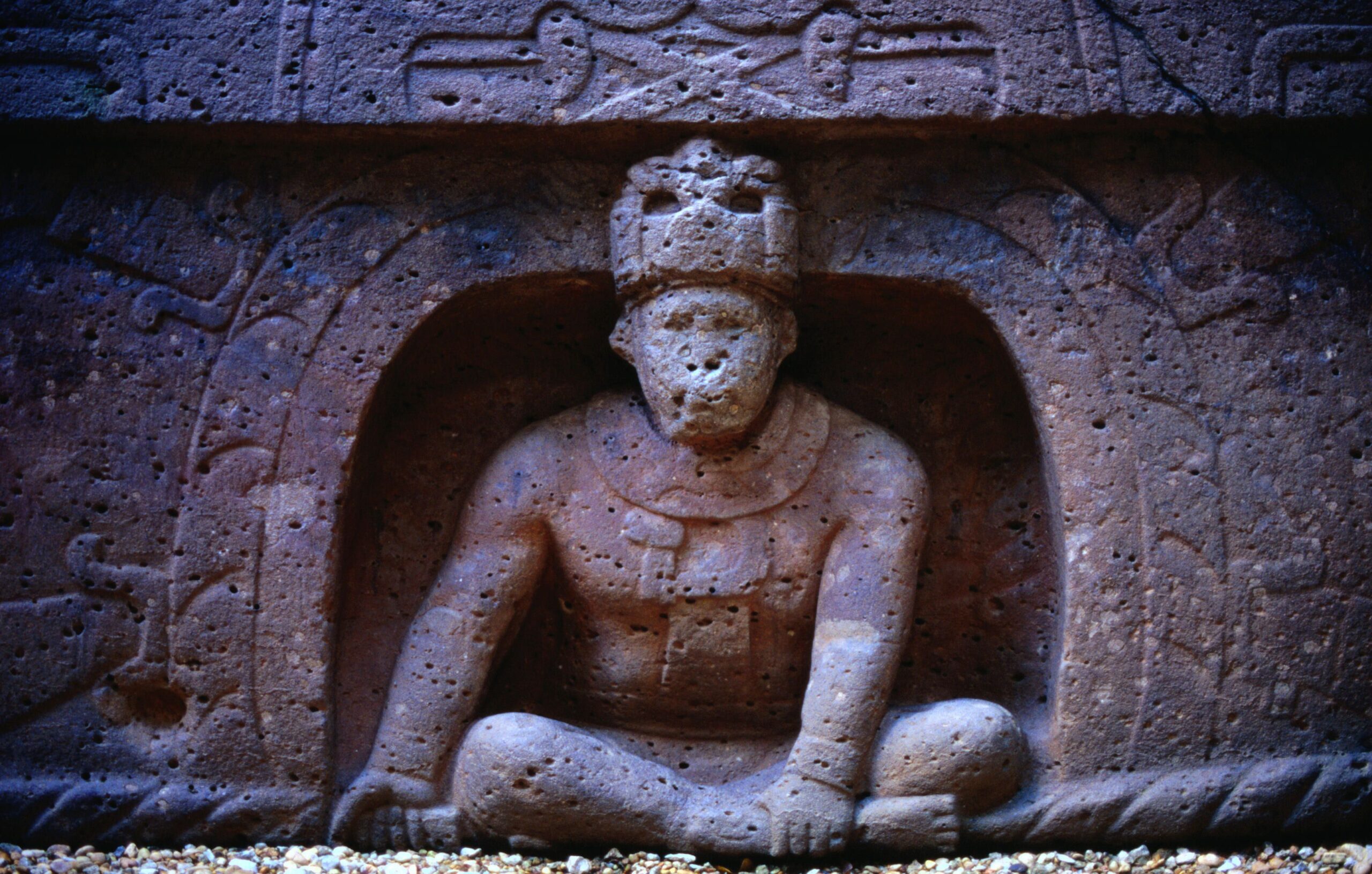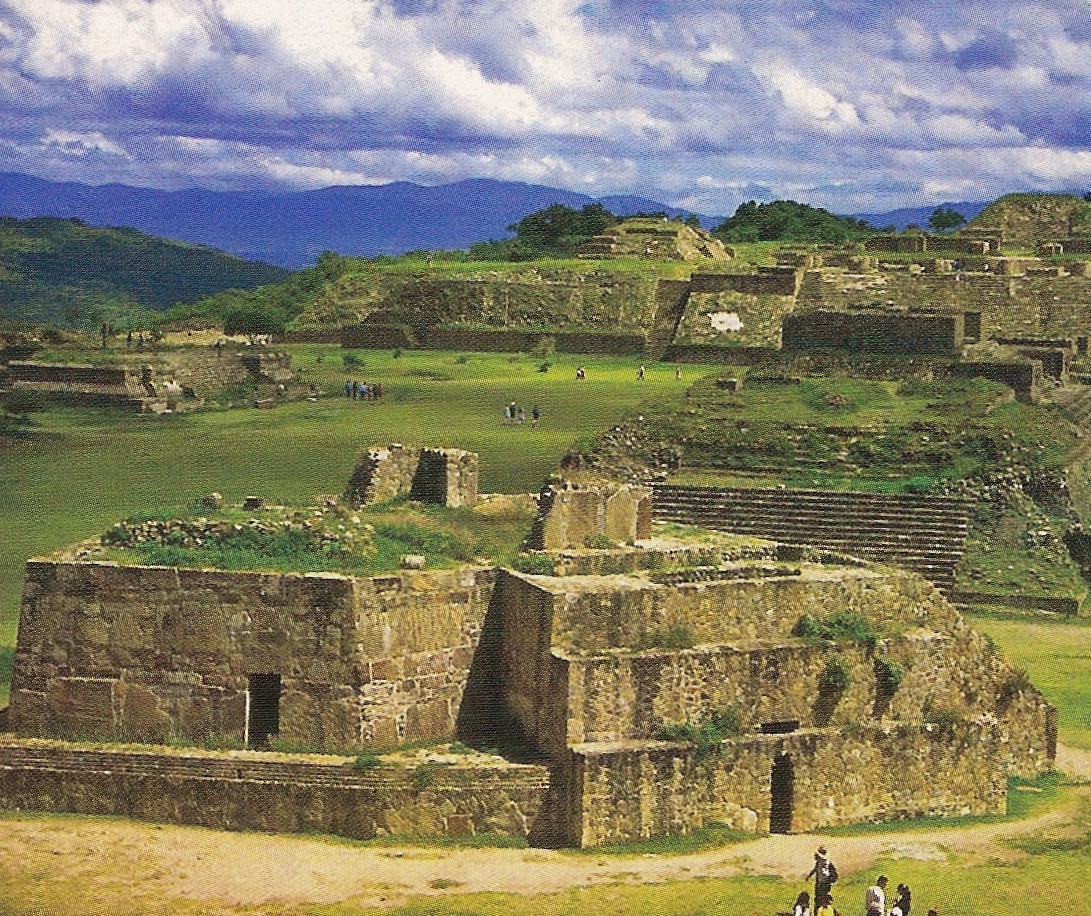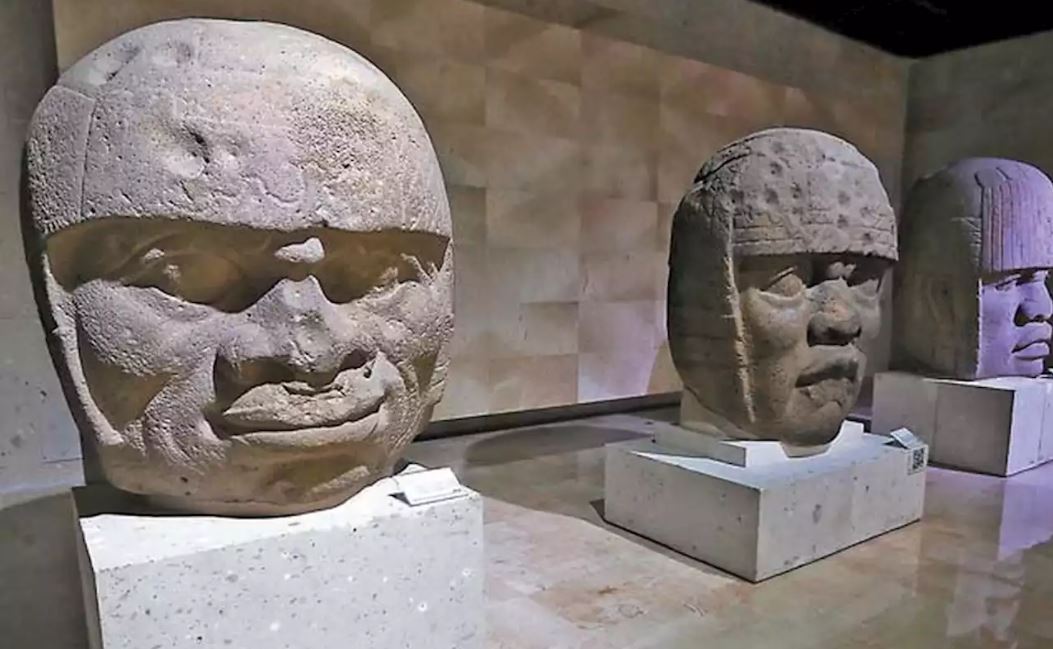The Olmec culture is considered the mother of Mesoamerican civilizations and symbolizes one of the most ancient peoples that expanded and occupied these territories for more than three thousand years. If you want to know more about the Characteristics of the Olmec Culture, we invite you to stay and enjoy this publication. Do not miss it!

Origin and Characteristics of the Olmec Culture
The Olmec culture is one of the oldest civilizations, composed of the vast Mesoamerican region. Its development in this territory occurred between 1200 and 1400 BC, however; the ethnic beginning of its members is up to the present a complete mystery, it is not certain how they called themselves or called themselves and their exact interaction in this world, because very little was the information that was preserved among their members. traces as study and research to the current world.
The Olmec expression was adopted by various archaeological researchers in the XNUMXth century, in order to designate the characteristic vestiges of this ancient culture, and in the Nahuatl language it can be translated as "people from the country of rubber or rubber". If anything distinguishes Olmec society, it is its great complexity, evident not only in its extraordinary cultural creations such as the famous colossal heads, altars, and jade objects, but also in its ability to transcend its original environment and to become the first truly Mesoamerican culture. .
Although it is known that, due to the many characteristics of the Olmec culture that have been maintained among the late Mesoamerican groups, it is considered the "mother culture", the truth is that its achievements must be seen as a consequence of the evolution of civilizations. previous. Be that as it may, the Olmecs have a special place in Mesoamerican history, and their political organization and worldview reached unprecedented complexity until then.
From this complexity arise several of the cultural orientations that from now on and until the Spanish conquest will detail all pre-Hispanic societies; Among the characteristics of the Olmec culture we have:
- The construction of ceremonial buildings located according to well-defined plans.
- The colossal heads that weigh tons.
- Polytheism in their religion, having considerable similarities with later mythologies such as the Mayan or the Aztec.
- Agriculture and fishing that were the axes of its economy and trade with other peoples.
- The traditional execution of rituals such as the ball game, the development of a calendar and its writing system.
- The tenure of a political system that was theocratic, and socially the fraction between the two groups: superior and inferior.
Location
The Olmec culture had its origin in the southern coastal territories of the Gulf of Mexico, which currently concerns the states of Veracruz and Tabasco. With approximately 125 kilometers long and 50 kilometers wide, it was located in territories such as:
- San Lorenzo Tenochtitlan
- Lagoon of the Hills
- three zapotes
- The sale
To finally extend victoriously from the west in the Tuxtlas mountain ranges to the east with the Chontalpa plain.
Olmec cities
The prosperity of the Olmecs was originally due to the use of the productive lands on the coast of the Gulf of Mexico. Around 1200 BC C. Significant urban axes were built in:
- San Lorenzo (the oldest),
- La Venta, the Laguna de los Cerros,
- Three Zapotes and;
- The limes.
San Lorenzo reached its highest point of apogee and influence between 1200 and 900 a. C. when its strategic location and security against floods allowed it to control local commerce; and there is evidence that San Lorenzo around 900 a. C. suffered a systematic debacle, while La Venta began to flourish in parallel, becoming the capital and having a population of 18.000 people. The three localities also had a bilateral symmetry in their planning, and in La Venta the first pyramid in Mesoamerica was built.
One of the most striking elements is the planned architectural design of the religious centers of these towns, for example, in La Venta the buildings are located symmetrically along a north-south axis with four colossal heads turned outwards at key points; as if they were the guardians of the complex.
Followed by a large ceremonial stepped pyramid (now a mound), a sunken plaza lined with two-meter-high basalt columns, and two small pyramids, are some of the features that would later be copied by the major sites of later Mesoamerican cultures that they also accurately aligned their structures. Both La Venta and San Lorenzo suffered systematic and deliberate destruction of their monuments, possibly between 400 and 300 BC. c.
Religion
As in part of the characteristics of the Olmec culture, the details of their religion remain inconclusive; but with the emergence of ancient evidence, it is possible to construct certain more important features of their religion.
The Olmecs seem to have assumed a special courtesy for the territories surrounded by nature linked with the firmament, the earth and the underworld. As a model of this were the caves, which in some way could lead to the subsoil and the hills that had water springs, offering in turn entrance to the three mystical places. Among the most significant hills for the Olmecs are: El Manatí, Chalcatzingo and Oxtotlitán.
There is no knowledge of the representations and names of the gods that the Olmecs venerated, but it is known that most symbolized natural events such as rain and fundamentally corn; For this reason, the gods known in Olmec artistic expression are identified with a number instead of a name.
Likewise, it is known that the Olmecs gave a special meaning to animals in the natural environment, especially to predators in the food chain such as jaguars, eagles, alligators, snakes and even sharks; identifying them with divine beings and possibly under the belief that the most powerful rulers could become such beings.
Additionally, they were also drawn to mixing animals to create weird and wonderful creatures like the were-jaguar, a cross between the two species that may have been their main deity. We also know that they worshiped a dragon and believed in four dwarfs who held up the sky, possibly representing the four cardinal points that, like other Olmec gods, were of paramount importance to later Mesoamerican religions.
Economy
The economy was one of the most significant characteristics of the Olmec culture, it was based on agriculture primarily working on crops of products such as corn and beans that were generally planted and harvested in two seasons of the year; They also planted pumpkin, guava and sapodilla.
They also collected the region's abundant resources such as plants, palm nuts, and even marine life such as turtles and clams. In the same way, typical products such as obsidian, jade, serpentine, mica, rubber, ceramics, feathers and polished ilmenite and magnetite mirrors were present in this civilization. It is important to note that all its products, without exception, were subsequently marketed to neighboring towns.
Language
Although it is not known precisely, historians believe that the language was ancestral to the Olmec culture and came from the Mixe-Zoque lineage. In terms of language, they were also assumed to be the main highly advanced civilization of Mesoamerican society.
Writing Instruments
The Olmecs are possibly the first Western civilization to create a writing method; this was found in San Andrés de Tabasco 2002 and in San Lorenzo 2006, in itself it was a representation of the signs that the Olmecs elaborated in the vicinity of the period 650 and 900 BC. C. long before the initial writings of the Zapotec culture of the year 500 a. c.
The 2002 find at the archaeological site of San Andrés de Tabasco shows a bird and signs similar to later Mayan hieroglyphs. Likewise, it happened in the well-known Cascajal Block, which was discovered near the San Lorenzo area in 2006 and presents a compendium of 62 symbols, 28 of which are unique and are engraved on a serpentine block.
A large number of leading archaeologists considered this discovery as "the oldest pre-Columbian writing". Others remain skeptical about the cause of the uniqueness of this stone, which is actually being removed from this archaeological context, as it bears no obvious resemblance to any other Mesoamerican writing system.
There are also Olmec signs identified as Epi-Olmec; although several archaeological researchers have the idea that the Epi-Olmec script could symbolize a passing script between that of the Olmec, which is more ancient, and the Mayan; however, this opinion is not approved by all who have studied this culture.
Social and political organization
There is little direct knowledge about the social and political organization of the Olmecs; however, most scholars assume that the colossal heads and other carvings are representations of their rulers, in this culture there is no such thing as the Mayan stelae where the names of their specific rulers and the dates they ruled are mentioned.
Although Olmec society, like other pre-Columbian cultures in Mesoamerica, may have been governed by a group characterized by superiority such as the warring priesthood (theocratic government), who maintained their power based on the divine mandates of their gods.
Art
Art is one of the most transcendental characteristics of the Olmec culture, it has many elements that have still been analyzed; but incredibly the most important exhibition of his art are the well-known Olmec colossal heads, which are an example of gigantic sculpture and one of his best works of art. It is believed that these represent warriors or leaders, currently 17 specimens are known, all of which are distributed between the Xalapa Museum of Anthropology and the La Venta Museum Park.
An interesting feature of these colossal heads is the contrasting appearance of African features, which has given rise to various speculations. A later refuted theory has been proposed, indicating interoceanic approaches in ancient times.
The first nine heads found were in San Lorenzo that were later relocated to La Venta, where they were buried; it is believed that they could symbolize the heads of the adversaries, hence the burial, or heads that were buried when they died. In addition, there is the belief that they could have idealized feline features and for this reason they have this appearance.
Additionally, there is the idea that these represent warriors and not gods, due to the helmets they wear. Its elaboration was made with basalt brought from great distances, weigh several tons and measure up to three and four meters high, and were found in the following remains:
- San Lorenzo: 10 colossal heads
- The Sale: 4 colossal heads
- Tres Zapotes: 2 colossal heads
- Rancho La Corbata: 1 colossal head
The Olmecs made other sculptures such as the one representing an Olmec fighter, which exhibits a bearded individual with all his limbs flexed, which gives him a unique realistic aspect in all pre-Hispanic art. There are also other important works such as the jadeite dwarf or the lord of the files; this last sculpture carries in its arms a child who is in fact believed to be a divinity, with typical features of the male jaguar erroneously called "baby face", and probably represents the birth of the jaguar god.
There is another form of sculpture in the monuments that are trapezoidal blocks, with mystical details on the sides and a hole from which a figure in the shape of a dragon's or jaguar's mouth emerges, possibly suggesting the creation of a god. In the same place, ceramic objects, figures and ceramic pieces have been found dating from the vegetative period between 1500 and 1150 BC.
Ceramics is the poorest culture, generally monochromatic and without a great variety of typologies; They are made in black and without any type of decoration. Around this same time, the use of basalt and obsidian began to attract attention; additionally, the use of quartz, pyrite and all hard stones stands out, as well as the use of jade used to make funerary masks.
Basic architecture of the Olmec civilization
In Mesoamerica all the walls, and primarily in the Gulf, consisted of a core of stone fragments or fillings surrounded by a retaining wall, robust layers of stucco that generally covered these walls, which were later decorated with paintings, sculptures or stucco. prints.
All of these architectural works are designed as a backdrop for rituals and were richly decorated, in its entirety the religious and ceremonial buildings were established where the processions and dramatic religious manifestations through the construction of pyramids, dance platforms and ball courts as primary targets.
Olmec Astrology
This wonderful and active civilization had a detailed idea of astrology, which was crucial for the direction of agriculture and other topics of great relevance to this culture. These were very intelligent and cultured, they learned to observe the sky and with this they managed to create a very precise calendar that considered the duration of the year, the lunar month, the agricultural cycle and the dates of the religious ceremonies they performed. Based on this they governed practically everything around them. They maintained their activity through the constellations.
End of the Olmecs
Archaeologists are still collecting clues that unravel the mystery of what caused the decline of this powerful and wonderful civilization, which was probably a combination of natural ecological changes and human actions that caused the early loss of this culture. A regrettable loss for the history of the Olmecs.
There are innumerable topics to deal with regarding its decline, which through the present findings have tried to decipher the end of this civilization. It is important to remember that in order to be such intelligent individuals in ancient times, their disappearance reveals the reasons that have not yet been clarified.
The Olmecs relied on a handful of crops for their basic sustenance, including corn, squash, and sweet potatoes. Although they eat a healthy diet with this limited amount of food, the fact that they have so much makes them vulnerable to climate change. For example, a volcanic eruption might cover a region with ash or change the course of a river: a calamity would have been disastrous for the Olmecs; Less dramatic weather changes like a drought could seriously affect your favorite crops.
Human actions probably played a significant role as: the war between the Olmec of La Venta and one of the many local tribes may have contributed to the downfall of the society; infighting is also a possibility. Other human actions, such as agriculture or the destruction of forests for agriculture, could have been just as detrimental to the sustainability of this society.
It has been established that the problems between themselves and possibly the strong attacks received by the wars, the very nature, among other things, led them to degenerate over time. There are structures of this civilization that have made it possible to explore the changes that arose in their water and planting sources, for what is known, that in some towns, it became unsustainable to live, which perhaps led them to emigrate, causing deaths in along the way, which were of great importance in keeping civilization at the forefront.
It is expected that with new findings, it will be possible to remove doubts based on some conclusions that led this important civilization to be lost over time.
If you found this article interesting about the different Features of the Olmec Culture, we invite you to enjoy these other links that will surely be of interest to you:





